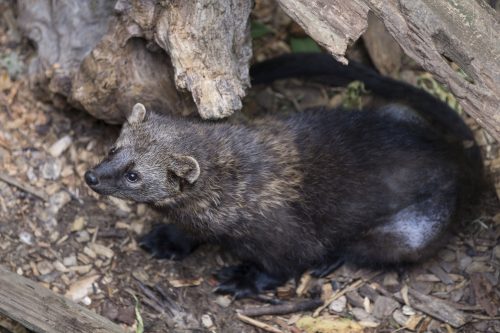
Solstice Again
December 18, 2020Solstice 2020
December 18, 2020Mapping the Appropriation of an Island
December 11, 2020I seldom review books on this blog these days, and never children’s books, but I wanted to discuss a few pieces of misinformation that I found recently in the (beautifully illustrated) book Manhattan: Mapping the Story of an Island, by Jennifer Thermes, geared to grade school children. Misinformation about the Munsee-Delaware Indians can be found many other places, not just in this book, but I’ll use it as a touchstone since it’s the latest perpetuation I’ve found of certain well-worked themes.
Manhattan’s original inhabitants are referred to in the book as “Lenape,” which, while not incorrect, is misleading in its imprecision. Lenape is often used for referring to groups speaking the Unami-Lenape language. Many groups of people originating around what is now the New York City area spoke a related language to Unami-Lenape called Munsee and referred to themselves as Munsee people. To make matters more confusing, both groups refer to themselves as Lenape (in different spellings) in their own language. The cultural demarcations between the groups, such as they were, have been blurred through centuries of dislocation and colonialization, but at this point there are still two distinct languages.

So Lenape isn’t wrong, exactly, but I would refer to people originally controlling Manhattan as Munsee, Munsee-Delaware, or Munsee-Lenape. This is how they refer to themselves today. Alternatively, there are even more specific words that could be used, though they are rather obscure. It seems like Lenape would be the anti-colonialist word of choice to use in place of Delaware, which comes from the name of an English colonial ruler, but when used by non-Natives it’s mostly just confusing.
On to another piece of misinformation, which is the etymology of “Manhattan.” The book says it comes from a Lenape word “mannahatta” and means “island of many hills.” That’s a lot of meaning to pack into four syllables, especially for a language from that island and those hills. Wikipedia derives Manhattan from another purported word, “manahataan,” and translates it as “place where we gather wood to make bows.” Both derivations, if true, involve speculation on root words and exceptions to Munsee grammar rules. It’s more likely that the Dutch mangled some other word, which may or may not have been Munsee. What I have heard from Munsee speakers is that the name Manhattan comes from the (verifiably real) Munsee word “munahan,” which means “island.” So the Munsee might have called Manhattan a hilly island, and European speakers may have truncated the place name and mispronounced it. But Manhattan does not mean “island of many hills.”
On to the sixty guilder question: how did the Dutch acquire “Manhattan”? At least the book equivocates “As the story goes” before repeating that the Dutch West India Company “bought the island from the Lenape in 1626 for approximately $24 worth of wampum beads and trinkets. For Native people, the idea of owning the land was as crazy as owning the land we breathe. More likely, the Lenape only thought they were agreeing to share the island with the Dutch.”
It was all a misunderstanding! Those Indians, too naïve or too spiritually enlightened, take your pick, just didn’t know what they were doing.
Think for a moment. If I were to buy a block of present-day Manhattan, I would not be able to call it the Manhattan Republic of Hearth and live completely by my own laws. I would still be subject to the laws (and taxes!) of New York City, not to mention New York State and The United States. If any of these governments decided they wanted the land for some purpose, they could purchase it from me (no matter who I bought it from) at a price they decided was fair. In virtually every country on earth, the land ultimately belongs to the nation that governs it. The Dutch West India Company was a private company doing business on foreign soil. The sale of land was an acknowledgement of that relationship. To me, this doesn’t sound like naivete or enlightenment; it sounds like business. It certainly was not a relinquishment of sovereignty, and the subsequent establishment of a European government on that land was not misunderstanding, it was theft.
As for the amount of money that changed hands, in present day dollars it was much more than $24, and Manhattan real estate has gone through the roof, but the price of the land is not a material point. The Munsee, like many Natives, wanted to trade with the Dutch, so if they wanted to give the Dutch West India Company a sweetheart deal to facilitate trade, that was their calculation. A poor calculation, as things turned out, but not an unreasonable one based on information available to both parties at the time.
This is a long complicated explanation for a children’s book, but the whole thing can be explained in simple words:
The people who originally lived on Manhattan are known as Munsee-Lenape. They are still around, though most of them live in other places. They left because the Dutch and the English stole the land. The name Manhattan might come from a Munsee word meaning “island,” but we don’t know.
And leave out the part about how many wampum beads. It really doesn’t matter, does it?
Favorable Omen
December 4, 2020
I caught this rainbow on Main Street in Keene Valley village midweek. This unusually strong double rainbow (the one in the upper portion doesn’t show up well in the photograph) was seen midday. Rainbows are the symbol of the goddess Iris, messenger of Hera. Iris is an amiable goddess who carries glad tidings for all the gods.
Getting ready for 2021
November 27, 2020The Quiet Time of Year
November 20, 2020A late winter has finally arrived. About 25 degrees Fahrenheit and that feels cold, quite unsettling in a place where winters typically move far below zero at night for days, even weeks, at a time. First electricity outage of the winter occurred a few days ago, though for less than an hour. When I first moved to the Adirondacks, electricity outages were a constant problem, but they’ve become less frequent. Still, there’s trepidation at the thought of potentially losing heat on a cold cold night.
I went on my first hike in winter boots this week, with only a dusting of snow on the ground. Didn’t bother with the camera, since the battery becomes exhausted quickly. My first ten minutes in the cold, I decided I would only go for short winter walks this season, maybe half an hour or so. Then I stayed out a full hour and didn’t want to come back even then. I’d forgotten how special a winter hike can be, and what a good mood it leaves you with.
Rough-legged Hawks are back in Vermont! I saw more than I could count on my drive to Middlebury. They spend time in Northeast farming country during the winter, hunting small rodents in open fields. I don’t see them in the Adirondacks, probably because there isn’t as much open country, there’s more snow, and it’s a bit colder. In the spring Rough-legged Hawks will head north, as they breed in the Arctic region. They are circumpolar birds, found in North America and Eurasia.



New Post about Circe at Return to Mago
November 13, 2020This post discusses appearances of Circe in Greek myth that you might not be familiar with.

Terror of the Forest
November 6, 2020The return of large tracts of mature forest in the eastern United States has meant the resurgence of two fierce creatures: the Fisher and Northern Goshawk. I wrote about the Fisher here. I have had the distinction of having been seriously threatened by both animals, although neither made contact.
I wrote about my encounter with the Goshawk for Moon Books Blog back in 2018, but the pictures got messed up when they changed the website. Here is another one.

To be fair, I’ve had plenty of encounters with Goshawks and Fishers where I did not feel threatened. Fishers, especially, have snarled at me from their perches in the lower branches of trees, but I stepped away to relieve their distress, not because I was in danger.
The Goshawk is a favorite falconry bird, because she is large and agile. Whenever I encounter a hawk or falcon in meditation, I feel an overpowering urge to take up falconry. Then I come out of my trance and realize I don’t have what it takes to commit to a feathered familiar. They require a great deal of time and attention, and most raptors are long-lived. So I continue cultivating my relationship on a metaphysical plane.

When I hear that ki-ki-ki-ki-ki-ki-ki-ki in the forest, however, I respectfully back away. That encounter with the Goshawk was the most frightening experience I have had, worse even than meeting that Mountain Lion that refused to back off. I have a theory that an aggressive encounter with an animal can transfer power, even if it feels uncomfortable at the time. Certainly there are some encounters that change a person forever.

